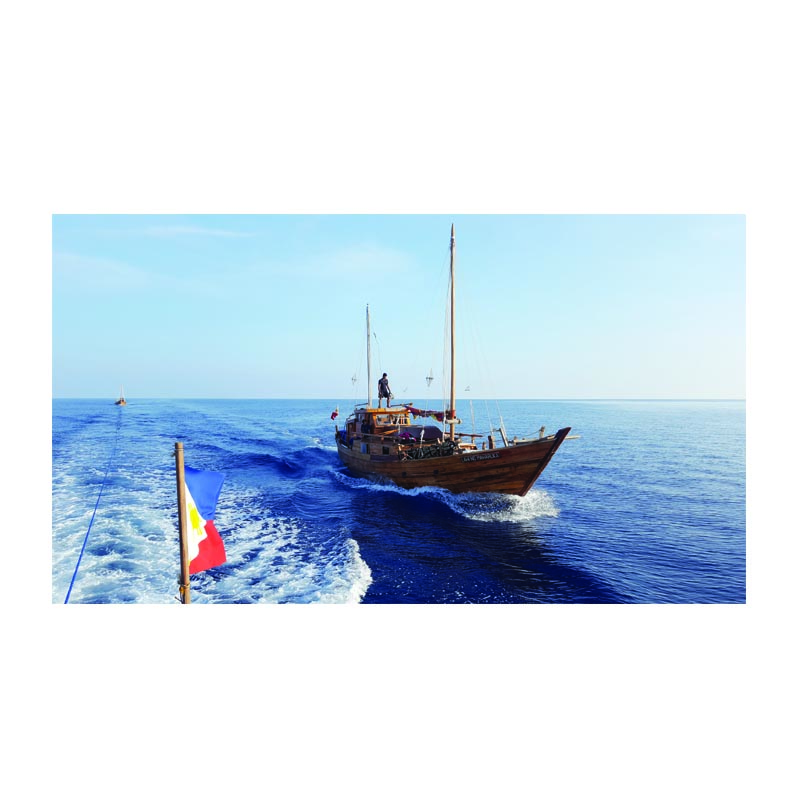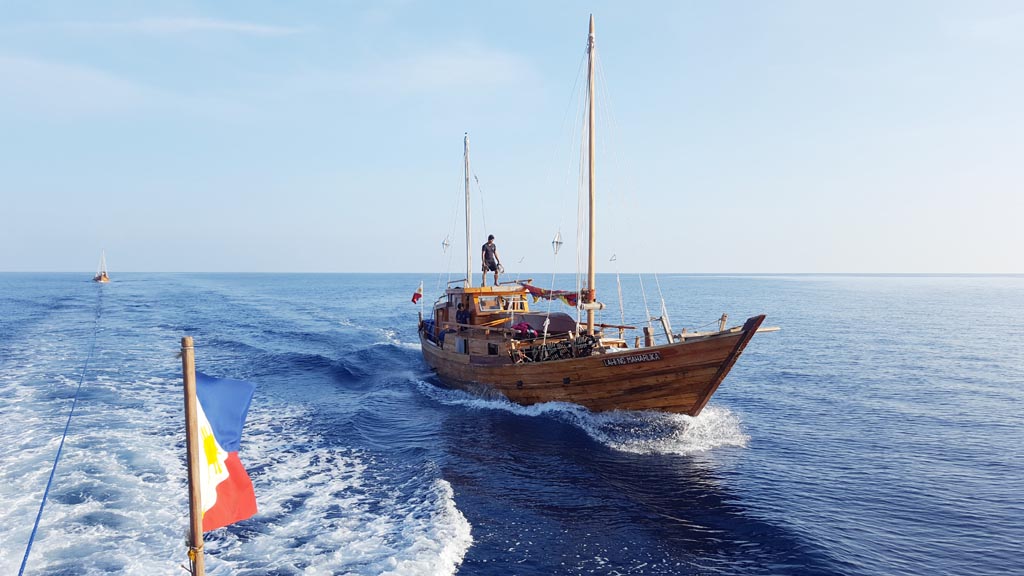
In celebration of Philippine Heritage Month (in China) and to further strengthen Philippines-China relations, as well as friendship, cooperation and understanding between the Philippines and Fujian, our balangay team under the leadership of Art Valdez replicated part of the 1417 voyage of the sultan of Sulu to China.
The faint glow of the Milky Way illuminates the pitch black sky as I wake up in the middle of the night; the steady murmur of our boat engine is a reassuring sound that we were still pushing forward. Over one side of the horizon the stars are setting, rising on the other.
It is my second night at sea, and our three small wooden balangay boats are slowly making our way back to the Philippines. Having successfully completed our journey to the Middle Kingdom, I tell myself, “We’re going home, we’re really going home.”
In 1417, Sulu Sultan Paduka Batara led 340 of his followers aboard boats like our balangays for a tribute mission to Ming Emperor Yong Le. He was well received by the Emperor but died of natural causes on his way home.
The Sultan’s wife Kamulin and two sons, Andulu and Wenhalla, remained in China to tend to his tomb. They were granted lands and resources by the Emperor.
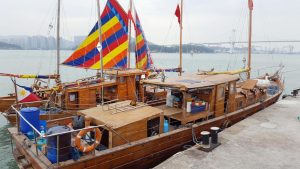
Today, about 21 generations later, more than 3,000 descendants live in the city of Dezhou, 320 kilometers south of Beijing. It is this historic occasion, the 600th anniversary of that voyage, which the balangay boats came to China to commemorate, a reminder of the centuries long ties between the Philippines and China.
We were supposed to sail to China last year, but the monsoon season and the shift in weather prevented safe crossings.
The Sultan reached the port of Quanzhou in September 1417, so technically, we are still within the 600 years of celebration. We may be a few months late, but we arrived.
Our journey to China was not easy. The tasks – constructing the boats, maintaining them, training the crew, providing the logistical and financial requirements and then waiting for suitable weather to set sail from the Philippines – were formidable.
Schedules were changed numerous times as the boats are not all-weather. The safety of our 33-member crew and that of the boats are always our number one concern.
During ancient times, sailing was not complicated. There were no passports, no borders, no regulations, no immigration. Boats freely came and went, pushed by the winds and carried by the waves to exotic lands and adventures.
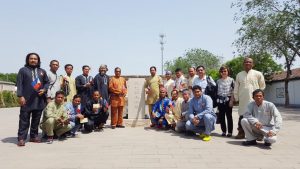
Today, the biggest challenge is modernity. Modernity makes it difficult to sail these majestic boats again.
Historically, the Philippines sent a total of 16 tribute missions to China – the earliest, from the Kingdom of Butuan in 1003 AD and the last in 1763 from the Sultanate of Sulu, spanning 760 years of friendly relations and trade.
With the eventual arrival of the balangay boats, 255 years since the last ancient trading boats docked in the Middle Kingdom, we once more renew age-old ties and somewhat forgotten historical links.
For the Chinese in the Philippines who trace their roots from Fujian, our journey is a symbol of the hardships and sacrifices our elders endured during those early migrations in search of a better life for their families.
The entire journey took a total of 25 days; the boats left Manila Yacht Club on April 28 and came back on May 22.
Upon arrival in Xiamen, and after the usual clearances with immigration and customs, the Philippine Consulate in Xiamen tendered a welcome dinner and it was non-stop banquets and activities since. Everyone gained a few pounds, which made the boats a bit heavier and thus more stable on the journey back.
The highlight of the entire voyage was paying our respects at the tomb of Sultan Paduka Batara in Dezhou, Shandong province. But since the route the sultan took to Beijing through the Grand Canal 600 years ago was
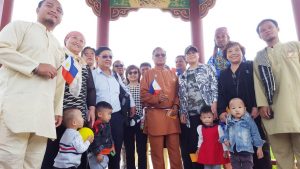
no longer passable, we had to take a 10-hour train ride from Xiamen to Dezhou, then onwards by train again to the ancient capital city of Beijing.
In between Xiamen and Beijing, the crew was able to visit museums and libraries in Quanzhou, Gulangyu Island, Xiamen University, Rizal Monument in Jinjiang, the Great Wall, Tiananmen Square, and pay a courtesy call on Ambassador Chito Sta. Romana at the Philippine embassy in Beijing. Books and colorful replicas of the balangay boat were exchanged.
After 10 days in China, we sailed to Hong Kong from Xiamen that took one and a half days’ time, docking at the Royal Hong Kong Yacht Club on the early morning of May 14.
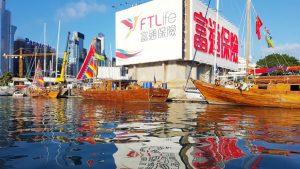
This was supposed to be a brief R&R for the entire crew, but almost the entire time was spent processing paperwork – first for the immigration and port arrival clearances, then for departure, testament to the increasing complexities of sailing in an ancient boat.
Nevertheless, the crew got some needed respite on the last night as the Philippine Consulate in Hong Kong hosted dinner and provided much-needed assistance. We left the “Fragrant Harbor” at noon of May 16 and docked at Poro Point in La Union a little before midnight of May 18, a continuous 60-hour journey.
The South China Sea was calm and sailing was largely uneventful; we even got to see playful dolphins and a large solitary seagull that circled the boats every morning.
After a brief stopover in Subic and an overnight stay at the Coast Guard Station in Sangley Point, Cavite, our boats made their way to Manila, escorted by a Philippine Coast Guard ship.
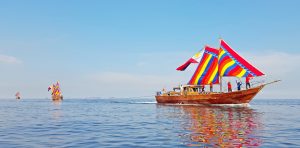
On the morning of May 22, our three balangay boats finally docked at the Manila Yacht Club to cheers and welcome bands. Among those present were former president Fidel V. Ramos, Supreme Court Senior Associate Justice Antonio Carpio, and officers from the Philippine Navy and Philippine Coast Guard, Butuan Global Forum, friends and project supporters.
China Consul General Luo Gang praised the voyage and crew for furthering friendship between the Philippines and China, wishing it will prosper for another 600 years. He recounted the small but crucial part he played, that of approving the visas for the entire delegation in a record one day.
From Maimbung, Sulu, where the balangay boats were constructed last year, we have traveled a total of almost 7,800 kilometers over land, sea and air.
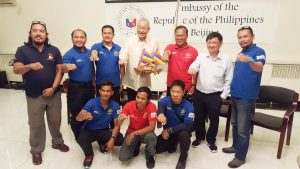
We visited Xiamen, Quanzhou, Jinjiang, Dezhou, Beijing and Hong Kong. It is a voyage not likely to be repeated again.
A heartfelt thank you for everyone’s support and prayers; this historic journey would not have been accomplished without your assistance.
To my fellow crew members, it was an honor and a privilege to have sailed and crossed the vast South China Sea with all of you; and to our expedition leader Art Valdez, under whose stewardship the success of this voyage rested, we shall keep living the dream!
Kaya ng Pinoy!
